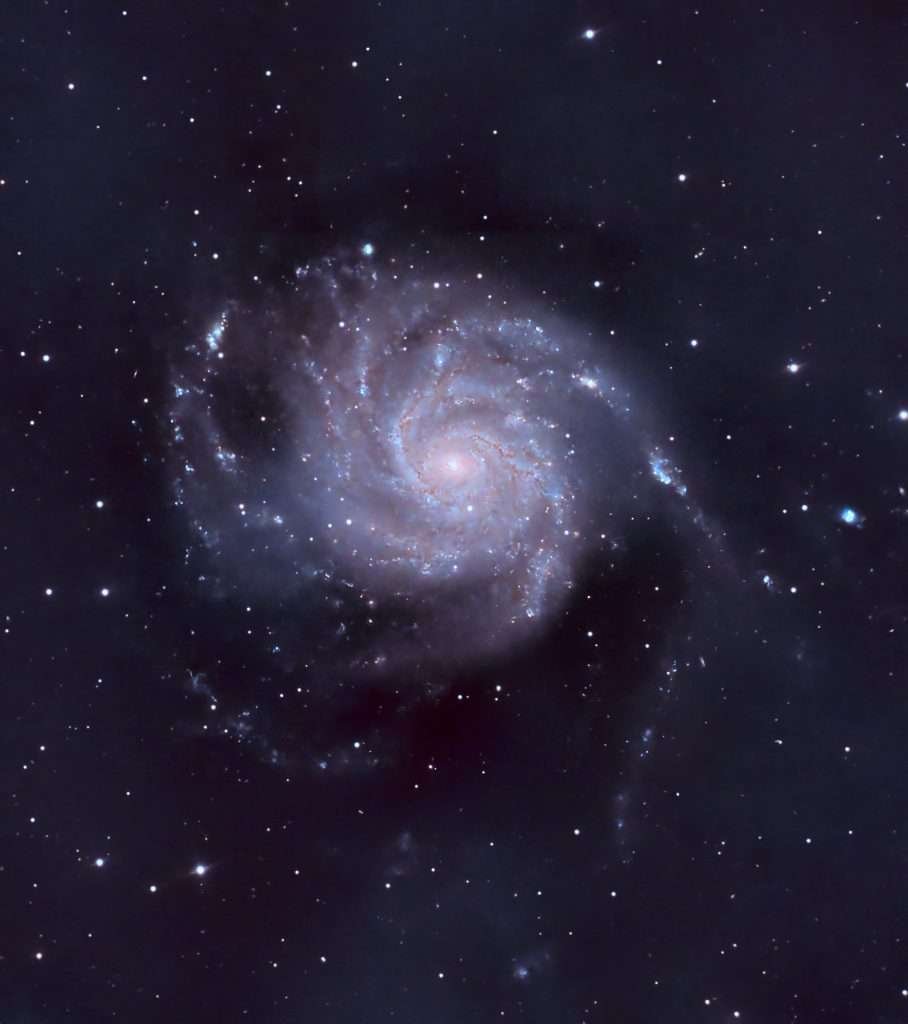It's galaxy season, which means that the Milky Way, where most nebulae reside, is below the horizon much of the night.
I thus fall back on the rare nebulae that pass above my busy horizon and on the galaxies, which are numerous but much more difficult to image with my equipment and my light pollution conditions.
So here is M 101, the reel galaxy (at least it's a descriptive name, if not inspiring).

/

Source : Wikipedia (https://fr.wikipedia.org/wiki/M101_(galaxie))
M101 (NGC 5457), aussi appelé galaxie du Moulinet, est une vaste galaxie spirale intermédiaire relativement rapprochée, vue de face et située dans la constellation de la Grande Ourse à environ 22 millions d’années-lumière de la Voie lactée. Elle a été découverte par l’astronome français Pierre Méchain en 1781
Avec un diamètre de plus de 182 000 a.l., M101 est une vaste galaxie qui contient environ mille milliards d’étoiles, soit environ 10 fois plus que la Voie lactée. La masse contenue dans son disque est d’environ 100 milliards 


(Source : Wikipedia)
The Pinwheel Galaxy (also known as Messier 101, M101 or NGC 5457) is a face-on spiral galaxy 21 million light-years (6.4 megaparsecs) away from Earth in the constellation Ursa Major. It was discovered by Pierre Méchain in 1781 and was communicated that year to Charles Messier, who verified its position for inclusion in the Messier Catalogue as one of its final entries.
M101 is a large galaxy, with a diameter of 170,000 light-years. By comparison, the Milky Way has a diameter of between 100,000 and 120,000[14] light-years. It has around a trillion stars.[15] It has a disk mass on the order of 100 billion solar masses, along with a small central bulge of about 3 billion solar masses.[16] Its characteristics can be compared to those of Andromeda Galaxy.

